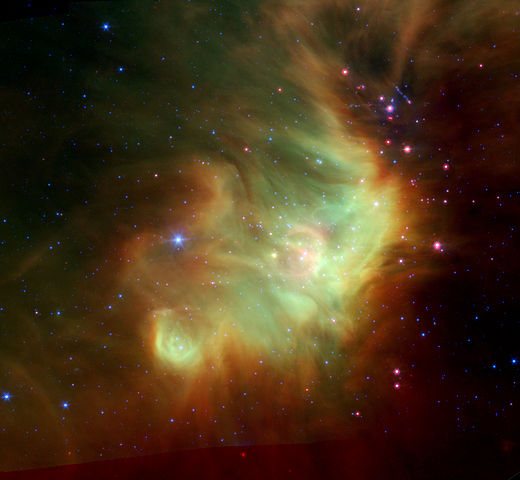
The Thammasat University Libraries have acquired a new book which is useful for understanding Thailand’s possible role in the future of space exploration.
Crowded Orbits: Conflict and Cooperation in Space is by James Clay Moltz. Anyone who thinks of outer space as empty has not been paying attention to the ever-increasing traffic jams up there. More and more nations, private enterprises, and even individuals send satellites into orbit, littering the area. They are competing for the best locations near Earth, and Dr. Moltz predicts potential disagreements and rivalries springing up as this trend continues. He suggests possibilities for cooperation, how to manage space traffic and get rid of abandoned satellites. Many countries just abandon old satellites as litter. As rich people pay to become tourists in space, they may also influence the situation. Dr. Moltz writes:
In today’s multinational space environment, there has too often been a tendency to think that improving security in space is somebody else’s job and that things will ‘work themselves out’ if they are simply left alone. This is wishful thinking.
Dr. Moltz is a professor at the Naval Postgraduate School, California, USA. He is the author of The Politics of Space Security: Strategic Restraint and the Pursuit of National Interests and Asia’s Space Race: National Motivations, Regional Rivalries, and International Risks. The latter book is in the TU Libraries collection, and the former is available from interlibrary loan. He has also coedited The North Korean Nuclear Program: Security, Strategy, and New Perspectives from Russia, which is in the TU Libraries collection.
Although a 1967 United Nations treaty agreed that space would be explored for the “benefit… of all mankind,” this goal has yet to be accomplished. The International Space Station is a cooperative advance, but there is also concern about possible competition. A large part of space travel is a matter of budget. America’s NASA, while working with budget cuts, still had 16.5 billion US dollars to spend in 2013, more than the next three space programs combined: the European Space Agency (5.6 billion USD) the Russian Federal Space Agency (4.4 billion USD) and Japan (3.8 billion USD).

Space exploration by Asian nations.
China was left out the International Space Station (ISS), and built its own, Tiangong-1. In Asia’s Space Race, Moltz points out that unlike the general space cooperation among European countries, Asian space exploration has created rivalries. In 2007, China tested anti-satellite weapons. It has also launched three manned flights. Japan has created a Kaguya mission to the moon, and a module for the ISS. India too has designed a lunar probe, Chandaryaan-1, and South Korea sent an astronaut to visit the ISS and plans to launch its own vessels in the future. Dr. Moltz notes that there is a direct link between economic development and space programs in Indonesia, Malaysia, North Korea, Pakistan, the Philippines, Singapore, Taiwan, Thailand, and Vietnam.
Thailand and space
The Space Generation Advisory Council (SGAC) Thailand argues that information from satellite technology can help the Kingdom’s all-important agricultural industry. Weather disasters and other matters may be foreseen and dealt with.
Starting in 1996, engineers from Mahanakorn University of Technology in Bangkok designed a micro-satellite system, working at the Surrey Space Centre of the University of Surrey, UK. The first Thai micro-satellite, THAIPAT-1, was successfully launched into orbit in July 1997.

Thailand’s Geo-Informatics and Space Technology Development Agency (GISTDA) in Bangkok and Chonburi was founded in 2000. THEOS, known as Thaichote, is an Earth observation mission of Thailand, developed at EADS Astrium SAS, Toulouse, France. It was launched in 2008 as the first operational earth observation satellite of Thailand.
The National Astronomical Research Institute of Thailand includes the Thai National Observatory on Doi Inthanon – the Kingdom’s highest mountain – in Chiang Mai Province. The Thai Southern Hemisphere Telescope, operated in collaboration with the University of North Carolina at Chapel Hill, is located in the Coquimbo region of Chile, where high altitude and a desert climate provide fine visibility.
Private space research in Thailand.
In addition to such governmental projects, some universities and students are becoming active in research. The Thailand Near Space Research Group has launched a high altitude balloon with sensors and tracking devices to study the higher atmosphere. To further stimulate the interest of young Thai people in space, the Space Krenovation Park in Sriracha offers a wide range of activities and innovations. Last year, the Thai National Astronomy Meeting: TNAM 2014 was held at the Faculty of Science, Chiang Mai University; the 10th Asia GIS Conference convened in Chiang Mai, organized by GISTDA; and a conference, Study in Space Technology & Application Engineering and Guidelines for Research was presented by the Ministry of Information and Communication Technology in Bangkok. Back in 2007, when a blogger for the Nation newspaper website asked readers if Thailand should send an astronaut into space, many replies were ironic, suggesting unpopular people who should be sent into outer space immediately. Others seriously suggested that Thailand’s threatened forests, farmlands, and seas should be the first focus of attention before space. Perhaps attitudes will change with further scientific developments.

(all images courtesy of Wikimedia Commons)
